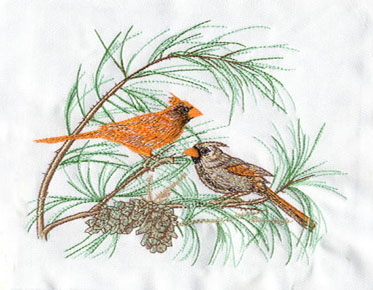nderstanding File Requirements for Custom Embroidery Digitizing
Introduction: The Foundation of Embroidery Digitizing
Embroidery digitizing is the process of converting artwork into a format that embroidery machines can understand and replicate on fabric. The quality of the final embroidered piece depends greatly on the type and quality of the file submitted for digitizing. In this article, we'll delve into the specifics of what type and quality of files are required to ensure successful custom embroidery digitizing.
Choosing the Right File Type: Vector Graphics
When submitting files for custom embroidery digitizing, vector graphics are the preferred choice. Vector graphics are composed of mathematical equations that define shapes, lines, and curves. Formats like AI (Adobe Illustrator), EPS (Encapsulated PostScript), and SVG (Scalable Vector Graphics) are ideal because they retain their clarity and scalability when resized, ensuring the design looks crisp and precise on the final embroidered piece.
Raster Images and Limitations
Raster images, such as JPEG, PNG, and BMP, are made up of pixels and are not as suitable for embroidery digitizing. While some digitizing software can convert raster images into embroidery designs, the quality may not be as high, and intricate details can be lost during the conversion process. Raster images should only be used if no vector version of the design is available.
Resolution and Quality: Essential Considerations
For vector graphics, the quality of the design relies on the clarity of the lines and curves. Ensure that the design is well-defined and doesn't contain any pixelation or artifacts. Clean lines and sharp curves translate into a better-quality embroidered outcome. High-resolution raster images can also be helpful when converting to vector, but the resulting design might not match the precision of true vector graphics.
Simplicity and Complexity: Balancing the Design
While vector graphics allow for intricate details, it's important to balance complexity with practicality. Intricate designs with numerous small details might not translate well onto fabric, especially when the design is embroidered at a smaller size. Simple, bold designs tend to work best for embroidery, as they maintain their clarity even on smaller scales.
Submission Guidelines: Communication Is Key
When submitting files for custom embroidery digitizing, follow the guidelines provided by the digitizing service. These guidelines might include preferred file formats, size restrictions, and any specific design considerations. Clear communication ensures that the digitizer understands your vision and can bring it to life accurately.
Conclusion: Crafting Quality Embroidery Through Thoughtful Submission
The success of custom embroidery digitizing lies in the quality and type of file you submit. Opt for vector graphics whenever possible, as they retain their clarity and precision on the embroidered piece. Prioritize clean lines and sharp curves, and consider the balance between complexity and practicality. By adhering to submission guidelines and effectively communicating your vision, you lay the foundation for a beautifully embroidered result that captures the essence of your design.



